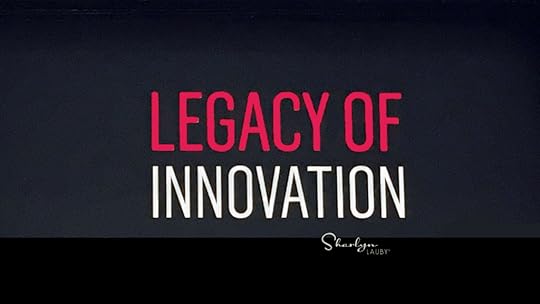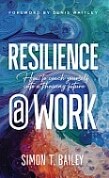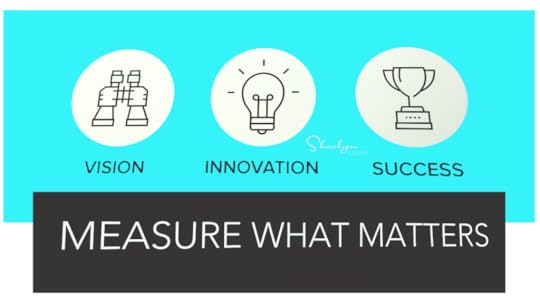Sharlyn J. Lauby's Blog, page 20
July 23, 2024
Keep Your Organization Compliant and Use Less Paper

Estimated reading time: 4 minutes
(Editor’s Note: Today’s article is brought to you by our friends at Poster Guard® Poster Compliance Service , the leading labor law poster service that gets your business up to date with all required and compliant federal, state, and local labor law postings, and then keeps it that way — for an entire year. Enjoy the article!)
I’ve mentioned on HR Bartender before that I like paper. I have a paper planner and use it daily. I like paper books and read them regularly. But I also realize that not everything I do needs to be paper, and it’s important to balance my use of paper for various reasons – storage, effectiveness, efficiency, and yes, the environment.
For example, I’ve started reading the manga series “One Piece”. It’s been around since 1997 (translation: there are lots of issues!), so I’m reading it online using the Libby app which is connected to my library card. It’s FREE, and I’m not using paper.
The reason I’m bringing this up is because businesses continue to use a lot of paper, too. I recently found a compilation of office paper consumption statistics that indicated:
The average office worker prints around 31 pages a day. The average U.S. worker uses 10,000 sheets of paper each year.This equates to about 12.1 trillion sheets of paper a year.Some people might say, “Hey, that paper is important documentation! We need it!”. And there could be some truth in that remark. But there are also statistics to show otherwise.
70% of office waste is paper. Businesses lose approx. 7.5% of all paper documentation. 76% of office workers admit to printing non-work documents at work.So, let’s admit it. Organizations and individuals need to be more cognizant of their paper use. Maybe we can do better.
From a human resources perspective, a place we can start monitoring our paper use is with compliance. Specifically, this involves labor law postings and handouts for online applicants and remote employees. Our friends at Poster Guard offer four electronic services to help you remain compliant and use less paper.
Employers are required to share certain employment postings with online applicants during the application process. Poster Guard’s Online Applicant Posting Service allows organizations to electronically display mandatory job employment postings.If your organization participates in E-Verify, then it’s required to provide online job applicants with the latest E-Verify and Right to Work posters. Poster Guard offers a specific service to electronically display these postings to online applicants. While you’re required to display physical posters in breakrooms, entrances and exits for onsite employees, the situation is different for remote and hybrid workers. Poster Guard provides an Intranet Licensing Service to give employees access to necessary labor law posters. Lastly, there’s a Mandatory Handout Service to distribute required federal, state, county, and city employee notices electronically.Besides saving on paper, what I like about these electronic services is — first and foremost – they support compliance. Not being compliant can result in legal fees and penalties. You gain the added assurance that you’re following the latest regulatory requirements — and protected from financial and legal risks.

HR departments don’t have to worry about monitoring and updating documents because Poster Guard takes care of that with their automated update feature. They have a legal team that works on this … for you. HR professionals can focus their energy on other activities like recruiting and retention. Finally, applicants, candidates, and employees know the organization they’re engaging with emphasizes doing the right thing.
As human resources professionals, part of our job is compliance. But that doesn’t mean compliance can’t also be effective and efficient. There’s an opportunity here to do both. Now could be a great time to transition from a paper process and focus on an electronic system that is workplace compliant and environmentally friendly.
The post Keep Your Organization Compliant and Use Less Paper appeared first on hr bartender.
July 21, 2024
Is Human Resources the Right Name – Ask #hr bartender

Estimated reading time: 3 minutes
I received an interesting reader note talking about the name “human resources” and leadership.
HR has evolved over the years from personnel to human resources to people and culture. What’s in a name?
Is HR really responsible for culture? If not, then why have ‘culture’ in the title? Is the real function of HR about change, leadership, workforce planning, and employee relations? Should the title then be people and organizational development?
This is not about what we are called, it’s about what we do and will do in the future.
I see a huge role in organizing leadership development programs because there are leaders and those who lead. There are a lot of the former and very few of the latter!
In my extensive HR experience, it all starts with leadership.
I agree with the reader that there should be alignment between what the function is called and what it does. We sometimes see this same challenge in other job titles. For example, some military job titles don’t immediately provide a picture of what the job actually does.
It reminds me of a video in SHRM’s Talent Acquisition: Creating Your Organizational Strategy. Florent Groberg, retired U.S. Army Captain and Medal of Honor recipient, is having a discussion about one of the biggest challenges with hiring veterans – deciphering the military occupational specialty (MOS). Think about it as trying to learn a new language to understand an employee’s knowledge, skills, and experience. It’s tough!
But back to the name “human resources”. So, I agree that the department’s name should match what they do. A department name also needs to have familiarity, meaning people should probably have some history with the name. For example, we know what the accounting department does. The name has been around for quite some time.
The name human resources has also been around a while. It was first mentioned in Peter Drucker’s book “The Practice of Management” (1954). While there are people who feel that the human resources name is old and should be changed, I’m not sure that old should be the only factor when it comes to a name change.
For example, when organizations started renaming their “personnel” departments to human resources, I believe it was in part because the name was old. But it was also to signal a new set of expectations for HR departments. New name = new expectations.
So, if an organization is saying, “Hey – we’re going to rename HR to the people and culture department because we’re changing what we expect from the function.” Then maybe that’s okay. With the name change comes:
Communicating to the new People & Culture department what the new performance expectations will be. That could include new responsibilities and metrics.Providing tools and training to individual employees so they can be successful in their new role.Communicating to the organization what the new People & Culture department will be responsible for. And if there are things that they will no longer be responsible for, indicating the new go-to department.The question really becomes, why does an organization want to change the name of a department? Is it to align the work with the name? Or is it just to sound cool and hip? Honestly, if the company changes the name from HR to something else but doesn’t change any of their responsibilities, then won’t employees just say, “New name, same old HR.”
And that doesn’t benefit anyone.
The reader note ends with the answer to the name question – leadership. The organization’s leadership team should want employees to have job titles that align with the work. They should also want department names to align with the work. And it’s okay to change a job title or a department name as long as all the other changes are done as well.
Image captured by Sharlyn Lauby while exploring the streets of Las Vegas, NV
The post appeared first on hr bartender.
July 18, 2024
Having Media Literacy Is a Business Competency

Estimated reading time: 4 minutes
Over the past few years, we’ve all been exposed to the notion of misinformation and/or disinformation. It might have been someone who shared an announcement that a celebrity has died, only to find out that it’s either not true or it happened four years ago. Or a news agency that labels an act of violence as terrorism (or completely dismisses it) before all the facts are in. Bottom-line: as much as social media, artificial intelligence, and technology have brought value, those tools have also created challenges.
So, my guess is that each of us has been susceptible to misinformation and/or disinformation, and it won’t be the last time. This is our new normal and not something to be ashamed or embarrassed about. Even professional journalists have experienced it. The answer isn’t to stop using the internet. It’s to get better about questioning what we read and see.
I discovered a YouTube program called CrashCourse Media Literacy that focuses on how to consume and evaluate the media. It might be tempting to think that if you use the internet regularly you already know everything there is to know. After watching the CrashCourse Media Literacy program, I would recommend it to anyone wanting stay grounded and learn more about how the internet shapes our lives.
The 12 episodes are educational, informative, and sometimes even funny. None of the episodes are longer than 10-minutes. I’d like to think that we can all afford to take 10-minutes a day to learn more about web media. And I’m not just talking about misinformation and/or disinformation. The program does a good job of defining what media is and how we need to think of it as more than social media platforms like Instagram or the site formerly known as Twitter. I had a few takeaways from this series that I believe will help me be a better media consumer.
Media literacy isn’t only about what we share. Yes, it’s important that we share only legitimate news. It’s equally important that we don’t assume that the news we receive is always 100% complete. It’s possible that we’re only hearing a small portion of the news or the facts. It’s our obligation as a media consumer to research the whole story. We can’t make informed decisions with a fraction of the facts. Granted, there might be times when we don’t get all the facts and we’ll have to decide what to do with that scenario as well. But sometimes, we can find more information if we go searching for it.
It’s important to understand what happens with our data. I’m not anti-marketing. I think it’s fantastic that marketing departments have access to consumer data that helps them make good business decisions. That being said, as consumers, we need to know what data we’re sharing with companies and what they have permission to do with it. This is especially true right now with artificial intelligence. I must admit that I was surprised the CrashCourse program included a section on user data, targeting ads, and terms of service agreements. It reminded me that part of my responsibility as a media consumer is understanding what happens with my data.
Media consumers might find it helpful to understand the business of media. Another aspect of the program that I thought was interesting was the conversation about who owns what media outlets and how media ownership can impact what information we see (or don’t see). The program also spent some time talking about which media entities are regulated by the government, which ones aren’t, and why we might want to know that information. Finally, it discussed how media companies create strategic partnerships with the businesses that make our phones, computers, and televisions to form bundles and exclusive agreements, which may or may not benefit consumers.
The purpose of this article isn’t to scare anyone. It’s not to imply that anyone should close all their social media accounts. And it’s certainly not to say that marketing and media companies are doing anything wrong. The purpose of today’s article is to encourage people to become more aware of their relationship with media. The more aware we are, the more media literate we can become.
As businesspeople, we spend a lot of time on the internet. We use articles and reports from the internet in our presentations and proposals. We share content on our social media accounts. We comment on what people write on their blogs, etc. It’s important that we’re responsible media publishers which means as individuals, we must learn how to be media literate.
Image captured by Sharlyn Lauby while exploring the streets of London, England
The post Having Media Literacy Is a Business Competency appeared first on hr bartender.
July 16, 2024
Knowledge Management: Add Project Management To the Process

Estimated reading time: 4 minutes
Knowledge management is the process of organizing, using, and sharing knowledge within the organization. According to IBM, there are three types of knowledge: tacit, implicit, and explicit.
Tacit knowledge is acquired through experience. An example of tacit knowledge could be leadership skills.
Explicit knowledge is captured in documents like manuals, reports, data, etc.
Implicit knowledge is often referred to as know-how. If we use the definition above for explicit knowledge, implicit knowledge would be how someone generates a report or data set.
I like to think of knowledge management like an organizational journal or scrapbook. It’s designed to provide history and context. Organizations need knowledge management because sometimes we forget why we created a policy, procedure, rule, etc. We just say to ourselves, “We’ve always done it that way.” That’s not always helpful, especially when it comes to strategic planning.
I was reminded about the importance of knowledge management after listening to a session during this year’s HR Technology Online 2024. Keynote speaker Michael Kannisto, Ph.D. founder of MindemicLab was presenting on how “HR Tech Success Starts with Asking the Right Questions”. In his session, he outlined a very comprehensive list of questions that organizations should be asking themselves when they are implementing a technology solution. While the list includes questions that you would expect, there were several that caught my attention.
BEFORE the implementation.
Who hates the current system? Maybe we need to talk with them. How would our competition solve this problem? This could be a great question to ask in other problem-solving scenarios as well!How will success be measured? Always important to know before you start a project – not after.DURING the implementation.
If the implementation fails, how is it likely to happen? We’ve defined success measurements (above), it could make sense to also discuss what failure looks like. What’s a warning sign that we’re off track? I love this question. Organizations often get themselves into trouble by ignoring the warning signs. And it ends up being expensive to fix. Will this conflict with any existing policies and/or procedures? The answer is yes. Yes, there will be some conflicts. Organizations need to identify and address them.AFTER the implementation.
How do we create user adoption? If the organization implements a system and no one uses it, then it’s hard to realize success and return on investment. How / When will we evaluate the system? Establish a regular schedule (in advance) to review the system. How will we know when it’s time to change / retire the system? I know we don’t like talking about retiring a system that we just implemented but things do get old and outdated.Again, I didn’t publish the full list of questions. Fortunately, Kannisto did posted them on his LinkedIn page if you’d like to check it out.
My big takeaway from Kannisto’s session was in the closing. He talked about revisiting the answers to these project management related questions during an HR strategy session. That’s when it occurred to me to include project management in the knowledge management process. Remind the HR team why a technology solution was implemented, the benefits and challenges experienced, and next steps.
It’s possible there are new people on the HR team who don’t know why the technology solution they’re currently using was selected. Frankly, there could be people who were on the implementation team that don’t remember why this specific solution was selected. We don’t have to revisit every detail, but when talking about future HR technology strategies it could make sense to provide some history with the numbers.
Project management teams cannot take the approach that keeping the details of why a technology vendor was selected and how the technology was implemented a secret. The key to a successful project is sharing. Just like the key to a successful knowledge management program is sharing. Organizations and individuals benefit from shared knowledge.
Kannisto’s session also reminded me that this approach could be valuable in non-tech settings as well. As the organization is discussing their talent acquisition strategy or employee experience or employee value proposition, think about how to bring some of those past discussions into the conversation. It’s possible they will provide some context to the current situation which would be helpful in the strategic planning process.
Image captured by Sharlyn Lauby while exploring the streets of San Francisco, CA
The post Knowledge Management: Add Project Management To the Process appeared first on hr bartender.
July 14, 2024
Mastering Your Exit: 10 Steps for Resigning from Your Job

Estimated reading time: 4 minutes
I’ve been seeing some articles recently about “rage applying”. It’s when a person is so fed up with their current work situation that they just start applying everywhere in the hopes that they’ll find something – anything – better than what they have.
While rage applying might get you a new job, one of the downsides can be job seeker regret. Especially if someone handles their resignation poorly. Even if the organization is terrible and your manager is a jerk, it’s important to resign the right way. That doesn’t mean you can’t be honest and authentic. Remember – you’re initiating the resignation. So, think through how you want it to happen. Here are ten things to consider:
Think about the reason you’re going to use. There are lots of reasons a person resigns. It could be pay, benefits, the company, your manager, the commute, etc. The company is going to ask you why, so think about the top 1-2 points you would like to communicate. Be selective and strategic in your response.Write a resignation letter. At some point, the company will expect formal documentation that you’re planning to leave. It’s possible to give verbal notice then follow-up with a letter. Resignation letters do not have to be long and they do not have to contain specific details. Give proper notice. Whatever your company says is proper notice (i.e., two weeks, three weeks, a month), give it. Your new employer should not ask you not to give proper notice. They would expect you to give them proper notice if you left them, so provide the same courtesy to your current employer. Be prepared to leave. Some organizations will ask people in highly competitive roles to leave the day they give notice (common example: sales representatives). It’s not personal, they ask it of everyone. Chances are you have already witnessed this around the workplace. If you’re in one of those roles, be prepared.Don’t expect a counter-offer. It’s possible (but highly unlikely) that your company will beg you to stay and give you a counteroffer. There is a plethora of reasons why companies shouldn’t give counteroffers and why you shouldn’t accept one. The best strategy is not to expect one. Find out about benefits and final paychecks. While you’re still there, find out about final pay checks and expenses, 401(k) plans, and health insurance (COBRA). Many HR departments have some sort of FAQ that they provide exiting employees with this information.Participate in an exit interview. If the company asks you to do an exit interview, do it. But this is where #1 is important. Know what you’re going to say about your work experience, your manager, and the company. There’s a way to be truthful without creating animosity.Help your replacement. If the company hires your replacement (or designates a couple of co-workers to handle your work), be helpful and show them what needs to be done. They will not be like you and do things like you. But remember, you’re leaving. You’ve done a good job and you should want them to be successful.Return all company property. I know this seems obvious, but I’ve seen exiting employees use this as a way to ‘get back’ at the company. If you have computer or phone equipment, return it in good condition. Make sure that the company gets any keys or badges. If you have concerns about the company claiming you didn’t return something, ask for a receipt.Keep the door open to return. Even if you’re angry with your employer, there could be a great opportunity that you’d be perfect for that doesn’t involve your current manager or co-workers.Resigning can be an exciting and stressful time. You’re trying to wrap up things at one job and start another. Resigning the right way allows you to focus on your new opportunity. It also sends the message to your co-workers and the rest of the organization that you wish them well.
Image captured by Sharlyn Lauby while exploring the streets of Chicago, IL
The post Mastering Your Exit: 10 Steps for Resigning from Your Job appeared first on hr bartender.
July 11, 2024
How to Write a Professional Business Text Message

Estimated reading time: 4 minutes
I recently wrote an article about “How to Write an Email that Others Will Read”. It provides great tips and reminders about sending good email messages. After the article was published, it occurred to me that another common form of business communication is text messaging.
So, I reached out to my community again and asked them tips for writing a professional text message. Please note, I’m not talking about personal text messages. It could make sense to view sending texts to friends and family differently from your manager and colleagues.
Before drafting a text
Ask yourself, “Why are you sending a text?” If emails are supposed to be brief and to the point, text messages should be even more so. Text messages should focus on one topic and/or one question.Be sensitive to the date / time you send the text. Even though text messaging is more common, there’s still a feeling that text messages have a higher priority and not everyone uses DND (do not disturb) features. If the message isn’t time sensitive, consider using email or the recipient’s preferred messaging medium. The goal is to get a response, so send the message the way someone wants to get it.Drafting the text message
Use their name. And let me add if this is the first time that you’re sending a text, it could be helpful to identify who you are. I was recently on a business trip and my client wanted to send me directions to the place we were meeting, but they had never texted me before. So, the text said, “Hi Sharlyn. This is NAME. Here are the directions.” I appreciated it – especially because they were sending me a link and I didn’t want to click on it without context.Be casual but not too casual. Do not type in all lowercase. Think about the ambiguity of using slang and acronyms. Maybe stick to using words and terms that you know are commonly used so there are no misunderstandings. (You can still type in all lowercase and be as hip, edgy, and cool with your friends and family as you wish.) Keep it brief but use full sentences. This is probably one of the ways you can have your text stand out as being professional and business-like … use complete sentences.Let me add that there was quite a discussion about the use of emojis. Some individuals are totally against it, primarily because some emojis are commonly misinterpreted. An example is the hands together emoji – does it mean “I’m sending prayers” or “thank you” or “high five” or something else? Other individuals felt emojis are okay if that’s part of your culture or your relationship with the recipient. Here’s my thought. I don’t typically text people that I don’t know. So, I’d like to believe that I can judge whether emojis are acceptable for the recipient. When in doubt, save the emojis until you know for sure.
Before you hit the send button
Take a moment to proofread. Double check spelling – it matters. Because clarity and brevity are the goal, make sure your text accomplishes the goal. Insert some common courtesy. Using “please” and “thank you” goes a long way in getting your text read and responded to. When in doubt, mirror their style . This is especially true when responding to someone else’s text. Pay attention to how others communicate with you. What’s their writing style? Do they use slang, acronyms, and emojis? It can be helpful to follow their lead.Text messages are a form of business communication. Even if it’s only in emergency or extraordinary circumstances. Which is why they should be brief, clear, and professional.
Unfortunately, like emails, many organizations don’t put any guidelines in place where text messaging is concerned. Maybe they should. The last thing any company wants is to have to investigate an employee relations issue and see some very questionable text messages. This list could be a starting point. Define when texts should be sent and how they should be written. It will help with proper performance and productivity!
Image captured by Sharlyn Lauby at the HR Technology Conference in Las Vegas, NV
The post How to Write a Professional Business Text Message appeared first on hr bartender.
July 9, 2024
Imposter Syndrome: What It Is and How It Impacts the Workplace

Estimated reading time: 7 minutes
I was facilitating a seminar recently and a conversation arose about imposter syndrome. While the group knew the definition of imposter syndrome, it was hard to discuss the impact of imposter syndrome on the work environment. So, I thought it might be a good time to learn a little more.
I reached out to Laura Lomeli, Ph.D., principal executive advisory consultant at BetterUp, to see if she would share her knowledge with us and thankfully, she said yes. Laura earned her Ph.D. in industrial and organizational psychology from Texas A&M University. She is passionate about building organizational systems that transform lives and organizations. In her role on the executive advisory team at BetterUp, she leverages this passion to design and deliver executive experiences that drive transformation efforts across industries.
In her career, Laura has focused on designing talent solutions, aligned with the organizational strategy, to improve the employee experience at Fortune 500 and start up organizations. She has served as an internal strategic talent partner driving organizational efforts to improve structure and operations, as well as employee engagement, across retail and corporate functions with some initiatives impacting as many as 1 million employees upon rollout.
Please note, the information in today’s article is for informational and educational purposes. It is not a substitute for professional medical advice. If you have any specific questions, you should consult with a healthcare professional.
Laura, thanks for being here. Let’s start with a definition. What is imposter syndrome?

[Lomeli] Even the most accomplished people sometimes struggle with self-doubt. For many of us though, acknowledging and appreciating successes can be really tough. BetterUp defines imposter syndrome as ‘the condition of feeling anxious and not experiencing success internally, despite being high performing in external, objective ways’. This condition, marked by a persistent sense of inadequacy, often makes people feel like ‘a fraud’ or ‘a phony’ and causes them to doubt their abilities.
While there isn’t a checklist for imposter syndrome, it does have some telltale signs. These include constant self-criticism – especially over past mistakes, undervaluing contributions, attributing successes to external factors, and generally lacking self-confidence.
How does imposter syndrome impact us personally? Professionally?
[Lomeli] If we don’t address imposter syndrome, it can lead to a downward spiral of low self-esteem, heightened anxiety, and depression. This affects our personal wellbeing, sense of fulfillment, relationships, and overall satisfaction with life.
These negative feelings can then spill over into our professional lives, impacting our performance, stifling our growth and career progression, and reinforcing our preconceived notions of inadequacy. We may shy away from opportunities, avoid networking, or sabotage our own success — all because we fear we’re not good enough. This doesn’t just affect us; it impacts our teams too. That’s why it’s so important to recognize and address these feelings.
By fostering self-compassion, resilience, and authenticity, we can break free from imposter syndrome and unlock our true potential, both personally and professionally.
What I love about the power of coaching is that through coaching, individuals are able to use the tools they learn to help them stand stronger and taller in who they are and show up more powerfully as who they are.
Does company culture play a role in imposter syndrome? If so, what does that look like?
[Lomeli] Absolutely. Company culture and systemic influences, like biases, play a huge role in the spread of imposter syndrome at work. For example, when a company reinforces stereotypes, puts employees down, or treats people differently based on factors like class, religion, or race, it increases stress and self-doubt. This creates the perfect environment for imposter syndrome to take root.
These biases can also lead to tokenism, making under-represented groups feel like they don’t belong. This creates pressure for them to set higher standards to prove their worth. If these issues aren’t addressed, imposter syndrome can become deeply ingrained in the company culture, its teams and in employees’ psyches.
As individuals, how can we recognize the signs of imposter syndrome in ourselves?
[Lomeli] Imposter syndrome can be deeply rooted in everything from small behaviors to major decisions, so individuals are actually in a great position to also address it themselves. There’s no single way to tackle imposter syndrome, but being open to self-reflection and willing to work on ourselves are key steps.
When you self-reflect, think about whether you consistently undervalue your contributions, attribute your successes to external factors, sabotage your own success, set unrealistic expectations and deadlines, or constantly fear not meeting expectations. If you notice these patterns in yourself while still achieving measurable professional success, you might be dealing with imposter syndrome.
How can I support colleagues who might be experiencing imposter syndrome, especially if they are reluctant to voice their struggles?
[Lomeli] Supporting colleagues who are struggling with imposter syndrome can be tricky given the nuances of each case, and the level of support we can offer really varies from person to person. However, there are some actions that can help you support your colleagues. You could walk them through a journaling exercise to help set realistic expectations around their workload, empathize by acknowledging your own knowledge gaps, encourage them to keep a list of achievements to refer to when they’re feeling unsure, and help them practice confidence.
Ultimately, there are limits to how much you can support your coworkers with their imposter syndrome. Ultimately, addressing it requires their personal commitment, and if it’s a systemic issue, it might need broader organizational changes.
As a manager, how can I support / coach a team when I see signs of imposter syndrome?
[Lomeli] Many managers might not realize it, but as the keepers of organizational culture, they’re in a unique position to address imposter syndrome at both the individual and team levels.
At an individual level, managers should avoid comparing team members’ performances. Instead, they should recognize each person’s unique skills and talents and offer one-on-one support for those experiencing imposter syndrome. Leading with empathy is crucial. Small actions like providing opportunities to build confidence, and recognizing individual wins can help team members grow without spiraling into self-doubt.

There are several ways to set the tone for your teams and encourage transparency and vulnerability. Normalizing conversations about imposter syndrome, encouraging diverse voices and perspectives in team meetings, and showing confidence in your team’s abilities by appreciating successes and guiding them through failures are great ways to inspire a supportive culture within teams and encourage sustainable individual and team growth.
Last question. How can human resources professionals help their organizations manage imposter syndrome?
[Lomeli] Most HR professionals know that closed-minded, cutthroat, and biased work environments are perfect breeding grounds for imposter syndrome. HR leaders have a crucial role in getting leadership on board to prioritize employees’ well-being and performance. Providing mental health resources, personal and professional growth opportunities, virtual coaching, group support, and leadership training can drive organization-wide change.
HR leaders also need to create an environment that fosters inclusion, belonging, and advancement for everyone. This means addressing issues like tokenism and its role in fueling imposter syndrome. Whether through manager bias training, workshops, or team-building activities, building a supportive and equitable company culture from the top down is one of the most challenging, yet impactful ways HR leaders can combat imposter syndrome in the workplace.
I want to extend a huge thanks to Laura and BetterUp for sharing their knowledge with us. If you want to learn more about the power of coaching, be sure to check out the BetterUp events and resources page. It was great to hear Laura talk about the role that managers play in organizational culture and team development. This can have an impact on how individuals feel about their performance.
I totally agree with Laura’s comment about how even the most accomplished people can struggle with self-doubt. It’s important to recognize our successes, even the micro victories. Each of us needs to find a self-awareness and self-discovery approach that works for us. Ultimately, it will help us succeed both personally and professionally.
The post Imposter Syndrome: What It Is and How It Impacts the Workplace appeared first on hr bartender.
July 7, 2024
Building Your Own Resilience Benefits You and the Team

Estimated reading time: 3 minutes
I recently saw a comment on social media that said there’s lots of talk about the need for resilient teams but not much about how to build resilience.
It reminded me of an article we recently published over here titled “Team Building and Team Development are not the Same Thing”. If you haven’t read the article, I hope you’ll check it out. Organizations need to help teams by giving members the proper training. For example, team members need communication skills training to be better at communicating with their colleagues. This could also mean that individuals need to learn about resilience, so they are able to effectively be resilient as part of a team.
When I did an initial search for resilience training, a lot of what popped up is related to the military. While I’m respectful of the military and their role, I think it’s fair to say that most of us don’t want to take military training (or enlist in the military) to learn how to be more resilient. Thankfully, there’s another option.
My friend and colleague Simon T. Bailey has a new book out on resilience. It’s titled “Resilience@Work: How to Coach Yourself into a Thriving Future”. I don’t want to give away the book, you should read it yourself, but there are a few things that I enjoyed and wanted to share.
It’s a short, easy read. Brevity is an art form, and this book accomplishes a lot in a few pages. As business professionals, our time and attention span are valuable, especially when it comes to this topic. I see myself using this book on a regular basis as a reminder, so I want something that’s short and easy to digest.

It doesn’t focus on testimonials, per se. I will admit when I started reading this book, I really didn’t want to hear from or about other people who are better than me at being resilient. The book has people profiles – but they’ve been named “worry”, “hurry”, “steady”, and “ready”. Personally, I loved that because some days I was “worry” and some days I could see myself as “hurry”. At other times I was “steady” and “ready”. I could relate to the profiles, which made the conversation better.
The book includes resources. At the end of the book, there are a couple of self-assessments that allow the reader to begin their self-discovery journey relative to their own resilience. There are also several pages of resources should you wish to do more research on the topic of resilience.
I thought Simon’s book was a nice start toward building personal resilience. It could easily become one of those books that you read a few times during your career to stay focused.
Both organizations and individuals face challenges at times. Being resilient is an important quality to have in managing those challenges. But resiliency isn’t as simple as “Viola! You’re resilient now.” It takes time, focus, and regular reminders. Consider putting together your resilience tool kit and fill it with resources that you can tap into as you need them. Not only will it be good for you … it will be good for the teams that you’re a part of.
Image captured by Sharlyn Lauby while exploring the streets of Orlando, FL
The post Building Your Own Resilience Benefits You and the Team appeared first on hr bartender.
June 30, 2024
Use Artificial Intelligence to Increase Your Curiosity

Estimated reading time: 3 minutes
I was chatting with some human resources professionals recently and the subject shifted to artificial intelligence (AI). We started talking about the different things that we were using AI for like job description updates and revising company policies.
Someone in the group mentioned that it was important to be curious with artificial intelligence and test the ways that AI can help us. It reminded me of the experiments I’ve been sharing here on HR Bartender like photo creators and icebreaker suggestions.
After the conversation, I decided to do another experiment. This one was focused on curiosity. Organizations want employees who are curious. I found an old Harvard Business Review article that cited research showing curiosity leads to high performance and better adaptability. I don’t know that things have changed. Curiosity can certainly lead to innovation.
So, I asked GPT – 4o (powered by OpenAI) and Gemini (powered by Google) the same question.
Tell me a job interview question related to curiosity.
The good news is that both AI tools provided a behavioral based interview question. And they both explained what the answer to the question should indicate. For example, GPT – 4o said the question would help gauge the candidate’s intrinsic motivation which can be an indicator of growth and innovation. Gemini outlined how the response was connected to problem solving, agility, resourcefulness, and critical thinking.
What was different in the two responses is that GPT – 4o provided follow-up questions where Gemini did not. Granted, I didn’t ask for follow-up questions, so Gemini did what it was asked. But GPT – 4o took that extra step.
If you’re interested in reading both replies from Gemini and GPT – 4o, we’ve put them side by side on a one-page PDF download.
In this experiment, I liked the GPT – 4o response better. It was also a reminder to me that I need to learn how to prompt artificial intelligence better. Kinda ironic that I’m learning this lesson with an interview question.
If we want candidates to tell us good information during the interview, then we need to learn how to ask good questions. In addition, we need to learn how to ask good follow-up questions. We shouldn’t assume that the candidate knows exactly what we’re looking for and will automatically share that with us. This is nothing new.
But this could be a very interesting experiment when it comes to interacting with AI to design interviews. What kind of responses do you get when you specifically ask for behavioral interview questions? What will you get when you specify that you’d like follow-up questions as well? And in this case, I only asked for one question. What happens if you ask AI to create a screening interview or an in-depth interview?
There’s still so much we need to learn about artificial intelligence. The way to begin is by being curious and asking good questions.
Image captured by Sharlyn Lauby while curiously exploring the streets of Lake Buena Vista, FL
The post Use Artificial Intelligence to Increase Your Curiosity appeared first on hr bartender.
June 27, 2024
Do a Mid-Year Review of Your Career

Estimated reading time: 3 minutes
Hard to believe we’re halfway through the year! One of the activities Mr. Bartender and I try to do is a mid-year review of how we’re doing. I’ve noticed other people doing the same. It’s a great opportunity to talk about personal and professional goals – the ones we’ve accomplished as well as the ones we need to refocus on.
When we set goals, it’s not unusual to have to make adjustments along the way. Sometimes our goals don’t take as long as we anticipated, and we’ve accomplished them. Sometimes, we’ve forgotten about a goal and need a reminder. And sometimes, we need to change or edit a goal because our circumstances have changed. Again, this is totally normal.
If you’re working on a mid-year review or want to encourage others to do their own mid-year review, here are some articles that you might find helpful. These articles might offer reminders or suggestions of things you’d like to focus on for the rest of the year.
How to Identify Your Most Productive Work Environment
You should be able to share with others what you want and need to be your most productive self. Your manager would love to know this information. And if you’re a consultant or working from home, your family might like to know this as well so they can support your needs.
10 Activities to Help Improve Your Business Acumen
It’s a challenge to stay current, especially when your plate is already full of work. To keep up on what’s happening in the business world, I find it helpful to occasionally take inventory of the activities that I’m doing. It reminds me to step back and just get focused.
Grow Your Professional Career Through Networking
Even if you’re not looking for a new opportunity, building professional relationships through networking is still a valuable activity. Networking can help us build confidence, boost our communication skills, market ourselves or our business, and learn new things.
5 Reasons You Can’t Achieve Your Goals (and What to Do About It)
Goal setting is important. We should set goals. But we don’t need to set goals just to have some. We don’t need to have lots of goals at the same time. When we set a goal, we should put a plan in place to achieve it. If our situation changes, we should consider whether we need to change the goal. Being flexible with our goals will help us achieve them.
Career Development Activities to Stay Current and Bring Value
The business world is constantly changing, which means our industries and departments are changing as well. Finding ways to stay current and bring value is critical to our personal success and the success of our organizations.
The purpose of a mid-year review isn’t to load yourself up with a bunch of new projects. Not unless that’s what you really want. A mid-year review is designed to celebrate successes and refocus so you can accomplish the rest of your goals.
The post Do a Mid-Year Review of Your Career appeared first on hr bartender.
Sharlyn J. Lauby's Blog
- Sharlyn J. Lauby's profile
- 10 followers



